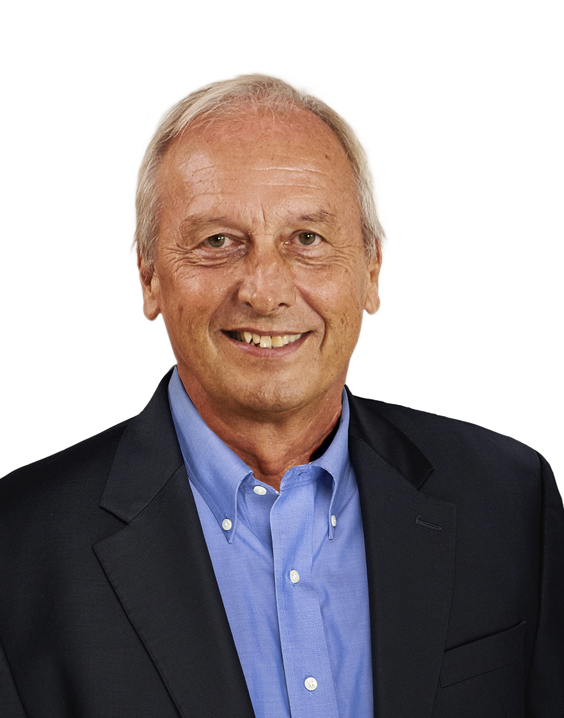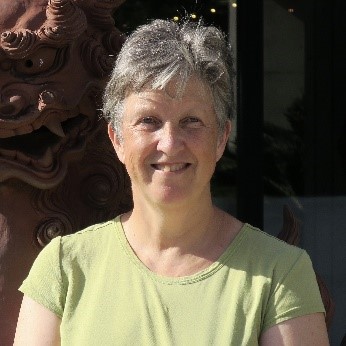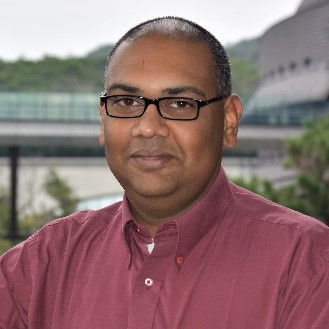This event now concluded. Report available here.
- Speakers:
Peter GRUSS (President and CEO, OIST)
Mary COLLINS (Provost, OIST)
Mahesh BANDI (Associate Professor, OIST) - Moderator: Jesper KOLL (Senior Advisor, WisdomTree Investments)
- Date and Time: Friday, May 15, 2020, 9:00–10:00 am (Tokyo time)
- Co-organized by: Asia Society Japan Center, The American Chamber of Commerce in Japan, and International House of Japan
- Language: English (without interpretation)

Peter Gruss, an internationally recognized researcher in gene regulation and embryonic development, served as President of the Max Planck Society, in Germany from 2002-2014. Previously, Dr. Gruss was Director of the Department of Molecular Cell Biology at the Max Planck Institute for Biophysical Chemistry in Göttingen for 16 years.
Dr. Gruss received multiple awards for his contributions to science, including the German Future Prize, the Officer’s Cross of the Order of Merit, the Harnack Medal, and the highest scientific honor in Germany, the Leibniz Prize. He is a member of various national and international scientific organizations including the American Academy of Arts and Sciences, the Göttingen Academy of Sciences, the European Molecular Biology Organization, and the German National Academy of Sciences Leopoldina, and is an honorary member of the National Academy of Sciences Republic of Korea and a foreign member of the Polish Academy of Sciences.
Appointed in 2017 as the second president of OIST, Dr. Peter Gruss notes that “OIST is one of the most interesting initiatives in world scientific research and education.” He further adds, “The Japanese Government has a clear vision for setting up an international, interdisciplinary university that will produce the future leaders for rapidly changing needs of global research and business.”
 Mary Collins is an immunologist and virologist. From 2005-15 she directed the Medical Research Council Centre for Medical Molecular Virology at University College London, a national hub for research and training in viral epidemiology, genetics and engineering. Collins has developed viral vectors for clinical use in gene therapy and vaccination and has studied viral and vaccine regulation of the immune response. From 2009-20014 Collins was also Dean of the Life Science Faculty at University College London. In September 2016 Collins relocated to Onna-son, Okinawa to take up the role of Dean of Research, then in 2018 Provost, at OIST.
Mary Collins is an immunologist and virologist. From 2005-15 she directed the Medical Research Council Centre for Medical Molecular Virology at University College London, a national hub for research and training in viral epidemiology, genetics and engineering. Collins has developed viral vectors for clinical use in gene therapy and vaccination and has studied viral and vaccine regulation of the immune response. From 2009-20014 Collins was also Dean of the Life Science Faculty at University College London. In September 2016 Collins relocated to Onna-son, Okinawa to take up the role of Dean of Research, then in 2018 Provost, at OIST. Prof. Mahesh Bandi grew up in India where he received his Bachelors’ in Computer Engineering from the University of Madras in 1998. Following a two year stint in the Indian software industry, he earned his MS Electrical Engineering (2002), MS Physics (2004) and PhD Physics (2006), all from the University of Pittsburgh. Following postdoctoral terms at Los Alamos National Laboratory (2006 – 2009) and Harvard University (2009 – 2011), he commenced appointment as Assistant Professor at OIST, Japan starting Summer 2012 and was promoted to Associate Professor in summer 2018. Since 2018, he holds an adjunct appointment with the International Centre for Theoretical Physics, Italy and advises two governments on renewable energy policy. Prof. Bandi’s primary research interests lie in Experimental Nonlinear, Non-equilibrium, and Condensed Matter Physics with supporting contributions in theory and numerics. His research portfolio is organized along four overlapping themes: Statistical Physics of Renewable & Sustainable Energy, Quantitative Life Sciences, Hydrodynamics, and Amorphous Media. His serious non-scientific pursuits include Japanese and Islamic art.
Prof. Mahesh Bandi grew up in India where he received his Bachelors’ in Computer Engineering from the University of Madras in 1998. Following a two year stint in the Indian software industry, he earned his MS Electrical Engineering (2002), MS Physics (2004) and PhD Physics (2006), all from the University of Pittsburgh. Following postdoctoral terms at Los Alamos National Laboratory (2006 – 2009) and Harvard University (2009 – 2011), he commenced appointment as Assistant Professor at OIST, Japan starting Summer 2012 and was promoted to Associate Professor in summer 2018. Since 2018, he holds an adjunct appointment with the International Centre for Theoretical Physics, Italy and advises two governments on renewable energy policy. Prof. Bandi’s primary research interests lie in Experimental Nonlinear, Non-equilibrium, and Condensed Matter Physics with supporting contributions in theory and numerics. His research portfolio is organized along four overlapping themes: Statistical Physics of Renewable & Sustainable Energy, Quantitative Life Sciences, Hydrodynamics, and Amorphous Media. His serious non-scientific pursuits include Japanese and Islamic art. Jesper Koll is the Senior Advisor of WisdomTree Investments, a global asset management company and ETF sponsor. Mr. Koll has been researching and investing in Japan since becoming a resident in 1986. For the previous two decades Mr. Koll served as the Managing Director of Research and Chief Strategist for major U.S. Investment banks – J.P. Morgan and Merrill Lynch. Mr. Koll has been serving on several government advisory councils, including Tokyo Governor Koike’s Global Financial Center initiative. He has written several books in Japanese, and is a member of the Keizai Doyukai, the Japan Association of Corporate Executives.
Jesper Koll is the Senior Advisor of WisdomTree Investments, a global asset management company and ETF sponsor. Mr. Koll has been researching and investing in Japan since becoming a resident in 1986. For the previous two decades Mr. Koll served as the Managing Director of Research and Chief Strategist for major U.S. Investment banks – J.P. Morgan and Merrill Lynch. Mr. Koll has been serving on several government advisory councils, including Tokyo Governor Koike’s Global Financial Center initiative. He has written several books in Japanese, and is a member of the Keizai Doyukai, the Japan Association of Corporate Executives.Report
1. Dr. Gruss began the panel discussion by introducing the history of infectious diseases:
What is a COVID Virus? How does it infect and spread?
COVID-19 is not the first pandemic. Communicable diseases existed from the hunter-gathering days but became widespread 10,000 years ago, once humans began to cluster in their shift to life in agrarian communities, and diseases, including malaria, influenza and small pox, first appeared. The Spanish Flu (1918-19) which killed 50 million victims is the deadliest pandemic of modern times. The Hong Kong strain (1968-69) killed 1 million people. COVID-19 has taken the lives of 300,000 people to date.
Viruses are harder to treat than bacterial diseases like cholera, tuberculosis, or food poisoning, which are treated with antibiotics, because they rely on entering host cells. Like many other viruses, coronaviridea are ancient, originating 55 million years ago. They are closely associated with the evolution of bats and birds. Mutations are generated during the replication of RNA, the genetic material of COVID-19, and some mutations allow infections across the species barrier.
Vaccines are generally developed by creating a weak fake version of a virus or using just a small part of the virus. It will take at least 12-18 months for a vaccine for COVID-19 to be developed. Many hopes rest on Remdesivir (Gilead) and Avigan (Fuji Film), which interfere negatively with RNA-dependent RNA polymerase. Furthermore, the Max Planck Institute for Biophysical Chemistry has recently analysed the structure of the protein necessary to replicate the coronavirus RNA; and with this insight of the molecular and atomic structure, we can now design molecules that specifically attack the viral RNA-dependent RNA polymerase.
How can infection be prevented?
Since there is no vaccine available as yet to combat COVID-19, the critical task is to prevent transmission of the virus from contact with infected people, whose breathing and coughing will expel it into the air one inhales. The most effective way to prevent infection is through a “lockdown.” Measures like wearing face-masks, closing schools or cancelling public events are helpful, but will only have a moderate effect.
2. Dr. Collins introduced the current status and future prospects of tests:
How to test for infected people?
Japan has developed a strategy for testing people using PCR (polymerase chain reaction) tests, where people are tested based on symptoms and a risk factor identified by a doctor. Contacts are traced and tested as well, and all infected people are isolated. This approach works well when the infection level is low. OIST has been commissioned by Okinawa Prefecture to conduct PCR tests using WHO recommended method with samples from remote areas, including Hokubu, Yaeyama and Miyako. In the future, OIST hopes to develop faster methods that take less than an hour and tests using saliva, as well as automating the process.
While PCR tests can detect infections from two days before an infected person shows symptoms or fever to two ten days after symptoms occur. To establish how much infections are present in the population, antibodies need to be measured, as they are more stable and remain in people for several months. OIST has been commissioned by Okinawa Prefecture to survey patients from five hospitals. It hopes to develop ways to test from fingerprints and improve the accuracy of home kit formats, which are widely discussed but not yet reliable.
Optimal testing worldwide is required in the long term, and thus needs to be efficient, accurate and affordable. In the future, we will hopefully have a faster virus genome test for even mild symptoms and be able to trace contacts by phone apps. We may also need to conduct PCR tests on people without symptoms, such as travelers, Olympic athletes and spectators, as we open up to normal behavior. We have yet to find out whether the presence of antibodies protects people from infection.
Research to develop vaccinations
A pandemic being a global issue, solutions should be deliverable and affordable. Antiviral drugs can lessen disease in the developed world, but eradicating the disease globally will take a very long time. In the case of small pox, the disease was eradicated in the North American continent in 1952, but took until 1977 for it to be eradicated in Africa.
COVID-19 has random mutations, but is not mutating substantially as it spreads, nor does it persist, as HIV does. Issues involved with developing a vaccine include where and how to test it and how long the protection will last. A negative aspect could be the risk of enhanced inflammatory disease, as witnessed with the Dengue fever or RSV.
3. Dr. Bandi discussed viral transmission on the population level:
The cumulative number of virus species were flat before the 1940s, but the increase rate has been two viruses per year since the 1960. There are three reasons for this phenomena: 1) Viral detection tools matured in the 1940s to 1960s; 2) Lifestyle improvements translated to increase in wildlife trade, with trade volumes, and thus risk, ten times larger in the U.S. than in China; and 3) Global population increase caused forest land encroachment for agriculture. Unfortunately, animals rich in viruses are also ones with which humans come in close contact.
How can we reduce the risk?
Disease virulence, and hence the degree of risk, is determined by the average number of people to which an infected person transmits the virus and the percentage of asymptomatic infections. We can reduce near-term risk as we wait for vaccines to be developed by personal hygiene, social distancing and continued testing. Herd immunity as seen in Sweden, for example, can be very dangerous.
2nd and 3rd waves and when will virus disappear?
We may be able to develop a vaccine in two years. However, stamping out the virus will require extreme measures, considering the long period of time it took to eradicate small pox. We must also be prepared for future waves. While the first wave is always stronger as more of the population is uninfected, later waves linger longer. Given the strong correlation between healthcare quality and mortality rate, improved healthcare will be an effective way to reduce long-term risk, along with controlling wildlife trade and deforestation.
Lessons learned from other countries
Different countries have demonstrated different trends to date. There is a lack of data regarding some countries and we have yet to uncover the dynamics.
Infected people respond differently
It will take two to five seasons to answer many pressing questions about COVID-19: Why is there are huge variations in how infected people respond to the virus, or in detected viral particles? How long does immunity last? Do climate factors affect COVID-19? How fast does the virus mutate?
The initial comments were followed with discussions with participants, which covered whether coming in contact with one particle would be infectious and whether the level of exposure would impact the severity of an infection, a possible link between gene mutations and mortality, explanations of Japan’s low mortality rate, and the validity of speculations regarding any positive impact of BCG inoculations on the virus.
In conclusion, the panelists discussed the “new normal”:
What could a “new normal” look like?
We need to know that transmission is controlled, which means that one infected person transmits the disease to less than one person on average, before we can seriously think about the next step. We need to have hospitals ready for a second wave and ensure that communities have a voice and are engaged in the transition. Many countries are embarking on a two-stage approach to overcome the crisis: 1) cushioning the downfall; and 2) accelerating recovery.
We should expect new trends in globalization and trade, causing businesses to near-shoring or even reshoring production, thus boosting the anti-globalization trend of recent years. We may also see changes in technology and innovation, with social distancing enforcing videoconferencing, virtual classrooms, telemedicine, e-commerce, and encouraging the development of next-generation remote working technologies. Governments will deploy surveillance technologies to track infected people and identify those who came into contact with them. Societal impacts and behavioral shifts are also expected.